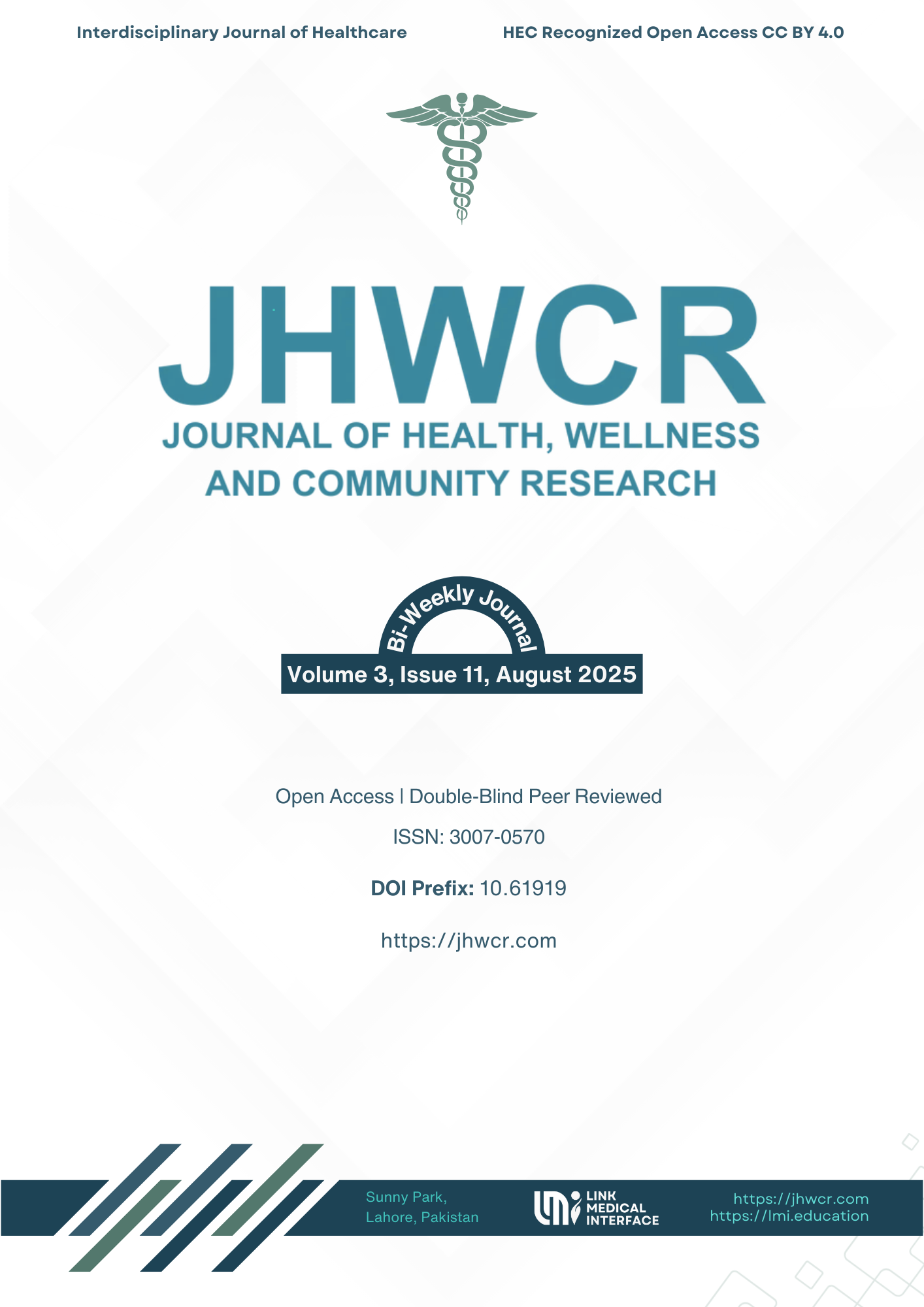Knowledge, Attitude, and Practices of Self-Medication Among Undergraduate Nursing Students in Malakand Division, Pakistan
DOI:
https://doi.org/10.61919/bf4byq35Keywords:
Self-medication, Nursing students, Knowledge, Attitudes, Practices, Malakand Division, Antibiotic resistance, Herbal medicineAbstract
Background: Self-medication is widespread among healthcare students, raising concerns about irrational drug use, antimicrobial resistance, and professional boundary violations. Nursing students are a critical group given their foundational pharmacological knowledge and future patient care responsibilities. Understanding their knowledge, attitudes, and practices (KAP) is essential to inform educational and policy interventions. Objective: To assess the prevalence, determinants, and patterns of self-medication among undergraduate nursing students in Malakand Division, Pakistan, and to evaluate associated knowledge, attitudes, and misconceptions. Methods: A cross-sectional observational study was conducted from February to October 2024 among 267 third- and fourth-year Bachelor of Science in Nursing students across multiple institutions in Malakand Division. Data were collected through a structured, validated, self-administered questionnaire and analyzed in Jamovi using descriptive statistics, chi-square tests, and logistic regression. Odds ratios with 95% confidence intervals were calculated, and p<0.05 was considered significant. Ethical approval and informed consent were obtained. Results: The prevalence of self-medication was 78.3%. Painkillers (41.6%) were most frequently used, followed by antibiotics (14.2%) and combined polypharmacy (22.1%). Convenience (46.1%) and limited healthcare access (18.0%) were leading motivators. Female students (95.7%) and fourth-year students (83.2%) reported higher prevalence. Despite high awareness of drug side effects (97.8%) and antibiotic resistance (88.0%), misconceptions persisted regarding herbal remedies (39.7%) and dietary supplements (66.3%). Conclusion: Self-medication is highly prevalent among nursing students, influenced by academic seniority and gender. Persistent misconceptions and boundary issues highlight the urgent need for curricular reforms, stewardship training, and regulatory interventions.
Downloads
Published
Issue
Section
License
Copyright (c) 2025 Suhail Ahmad, Alamgir Khan, Jamshid Iqbal, Syed Ihtisham, Aimal Iqbal, Abdullah Iqbal, Mudassir Ahmad (Author)

This work is licensed under a Creative Commons Attribution 4.0 International License.


